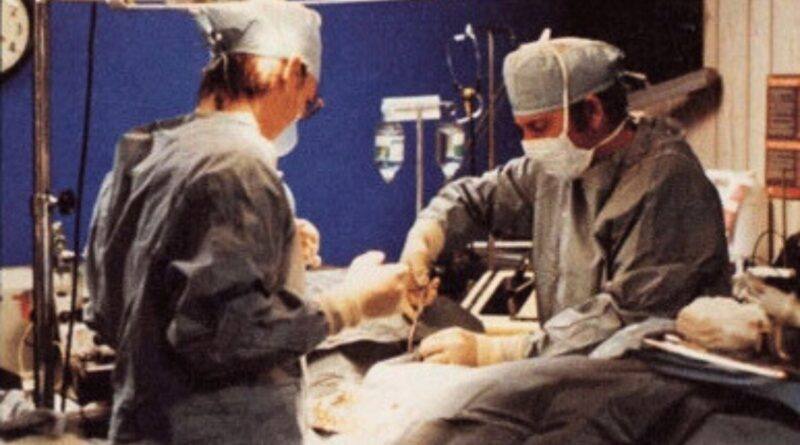Cryonics: Life Frozen Now To Be Alive Again
WFY Bureau Desk | Health & Wellness | August 2025
Cryopreservation and Cryonics: A Scientific Pursuit Beyond Death
Imagine if death were no longer the final curtain, but merely an intermission. For centuries, humans have grappled with mortality, not just emotionally and spiritually, but scientifically. While traditional medicine works to extend life, a radical field of research dares to ask a more ambitious question: can we return from death altogether?
Enter the world of cryopreservation and cryonics, scientific disciplines that aim not only to preserve life but to potentially reverse death. Once confined to the realms of science fiction and futurist speculation, cryonics is now moving closer to clinical corridors and technological investment.
This article explores the principles, procedures, possibilities, and present realities of cryonics, including its most recent developments and ethical implications for the Indian diaspora and the world at large.
What Is Cryopreservation?
Cryopreservation refers to the process of preserving cells, tissues, or entire bodies at extremely low temperatures, typically at or below -130°C. At these temperatures, biological activity effectively halts, significantly slowing down or preventing the decay of organic material.
Cryopreservation is already well established in medicine and biology. It is used to freeze sperm, eggs, embryos, stem cells, blood, and even organs for transplantation. These are later thawed and used with remarkable success. The science behind cryopreservation is precise: freezing must be done in a way that prevents ice crystal formation, which can rupture cell membranes and destroy tissue.
To achieve this, substances known as cryoprotectants are used. These compounds replace water within the cells and prevent internal crystallisation. The aim is not to freeze but to vitrify, turning tissue into a glass-like solid without forming ice. This method is already part of standard medical protocols, but extending it to entire human bodies, especially the brain, is where the field enters speculative terrain.
What Is Cryonics?
Cryonics goes beyond cryopreservation by attempting to preserve the entire human body or brain after legal death, with the hope that future science may be able to restore not only the body’s functions but also the consciousness and memory of the individual.
In essence, cryonics treats death as a process, not an event. Proponents argue that if one can halt the degradation of brain cells soon after death, the structure of identity may be preserved well enough for future medical technologies to repair the damage and revive the individual.
This preservation is initiated as quickly as possible after legal death has been declared, using a specialised emergency response team trained to begin the procedure within minutes. The body is stabilised, cooled rapidly, perfused with cryoprotectants, and eventually stored in liquid nitrogen tanks at -196°C.
Tomorrow Bio: A European Experiment in the Future
One of the latest players in this frontier science is Tomorrow Bio, a Berlin-based startup offering full-body cryopreservation for around $200,000 (roughly ₹1.74 crore). Their aim is deceptively simple: to preserve bodies today in the hope they can be revived tomorrow.
Operating 24/7 with dedicated emergency teams, the company ensures that preservation begins almost immediately after legal death. Any delay could allow irreversible cellular damage, especially in the brain. So far, Tomorrow Bio has reportedly cryopreserved a handful of people and pets, while nearly 700 individuals have enrolled for future procedures.
The company’s long-term ambition includes expanding its operations across Europe and the United States by 2026. The idea is not just commercial but also philosophical, redefining death as a reversible state rather than a permanent one.
Scientific Ground Realities: Hope or Hype?
Despite the growing interest, the science behind cryonics remains largely unproven. No human or animal has ever been successfully revived after whole-body cryopreservation. While smaller biological samples can be frozen and thawed with high success rates, the complexity of the human brain presents a formidable challenge.
Key issues include:
- Structural Integrity: Even with vitrification, some degree of tissue damage may occur. The brain’s neural connectome, the map of its connections, is crucial for identity and consciousness. Whether this delicate structure can be fully preserved is unknown.
- Revival Technology: Currently, there is no method, biological or mechanical, that can restore a cryopreserved body or brain to functioning life. Theoretical pathways include nanotechnology, regenerative medicine, or digital brain emulation, but none are near realisation.
- Legal and Ethical Questions: Declaring someone “legally dead” and then preserving their body assumes future medicine will redefine what it means to be “alive.” This raises complex questions about consent, identity, and bodily rights in future societies.
Leading neuroscientists remain sceptical, suggesting that the vision of reviving a human after cryopreservation remains decades, if not centuries away, if at all possible.
The Promise: Who’s Signing Up and Why?
For many, signing up for cryonics is not about certainty but hope. Some view it as an insurance policy against the limitations of today’s medicine. Others are driven by curiosity, a belief in future technologies, or a desire to reunite with loved ones in a more advanced era.
Surveys show that most signatories are middle-aged professionals, often from scientific or tech-related fields, who are comfortable with speculative thinking and long-term planning.
Cryonics is also gaining traction among certain segments of the global Indian diaspora. With its philosophical parallels to rebirth, karma, and the cyclic nature of life, some individuals see cryonics as a technological cousin to spiritual reincarnation—albeit guided by machines rather than mysticism.
India and Cryonics: Are We Ready for the Future?
In India, cryopreservation is still limited to medical uses such as fertility treatments, blood banking, and organ transport. The idea of preserving entire human bodies post-death has not yet entered mainstream consciousness.
Several factors contribute to this:
- Religious and cultural beliefs about the afterlife and cremation
- Legal constraints on handling the deceased
- Lack of infrastructure for ultra-low temperature biobanking at scale
- Limited awareness and higher cost barriers
However, the growing Indian interest in biotechnology, medical tourism, and transhumanist thought suggests that the country may soon begin engaging with these questions more seriously.
International firms have already begun exploring the Indian market as a long-term opportunity, especially among younger, globally exposed urban populations.
The Cost Factor: Who Can Afford to Freeze the Future?
At nearly ₹2 crore per person, cryonics remains a luxury service. The cost includes standby emergency services, cryoprotectant materials, the surgical procedure, and long-term storage that could last centuries.
To reduce financial hurdles, many cryonics firms allow customers to take out life insurance policies that name the company as a beneficiary. Upon death, the insurance payout covers the preservation.
Yet, ethical concerns remain: should such services be available only to the wealthy? Will future societies prioritise reviving the rich over the rest? These are questions that echo not just across labs and boardrooms but also in philosophical and sociological circles.
The Ethical Crossroads
Cryonics sits at the intersection of ethics, ambition, and scientific unknowns. Key moral questions include:
- Identity and consent: If someone is revived centuries later, are they the same person? Can they consent to being brought back into a society they never imagined?
- Social impact: Could revival create psychological trauma, legal confusion, or social isolation?
- Medical responsibility: If revival fails, who bears the blame? If it succeeds, who funds the person’s care?
- Religious implications: Different faiths interpret death in vastly different ways. Cryonics, by delaying the decomposition of the body, potentially disrupts traditional rites and beliefs about the soul’s journey.
These concerns are not mere thought experiments. As the technology advances and more people consider cryonics, societies will need frameworks to address such unprecedented dilemmas.
The Future: What Might Make It Real?
To turn cryonics from speculative science to standard practice, several breakthroughs are essential:
- Advanced Neural Mapping: Precise and non-destructive scanning of the brain’s full structure and chemistry.
- Nanorobotics: Devices capable of entering a frozen body and repairing cellular damage at a molecular level.
- Brain-Computer Interface: Systems that might someday extract consciousness or memories from preserved neural tissue.
- Biological Resurrection: Using stem cells, tissue engineering, or even synthetic biology to reanimate cryopreserved organs or organisms.
While none of these exist today, rapid developments in AI, quantum computing, and cellular regeneration suggest that tomorrow’s medical landscape may be radically different. Whether it will arrive in time for those currently in cryogenic storage is the billion-dollar question.
A Dream, A Risk, A Reflection
Cryonics is not yet a proven science. It is a bet on the future, taken by those willing to trade certainty for possibility. It is equal parts scientific ambition and existential yearning, a modern attempt to outwit time.
For many, it may remain an unreachable fantasy or a dangerous overpromise. But for others, it is a deeply personal, even spiritual choice. A way to extend their story beyond the final chapter. A chance, however slim, to live again.
Disclaimer: This article is intended for informational purposes only. It does not serve as medical, legal, or ethical advice. The technologies described are speculative and currently unproven for human revival. Readers are encouraged to consult scientific and ethical experts before making any decisions related to cryonics.




